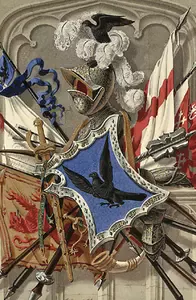- Home
- >>
the asteroids
[ + links to: Asteroid Progenitor Planet - Ceres - Chill on Beautiful Iskar! (plus the note How to borrow a fictional asteroid) - The Little Prince - Peril on Pallas - Rimworld Trash - Rock and a Hard Place - Rock and the Belt Pirates - To the Belt with Alan E Nourse - What to see on the Asteroids -
What to See on Ceres - What to see on Eros - What to see on Icarus - What to see on Iris -
What to see on Pallas - What to See on Vesta ]
A special romance haunts the Asteroid Belt. That region of the Old Solar System is as burstingly unique, as full of its own singular character, as are any of the nine planets or their moons, in the corpus of traditional science fiction.
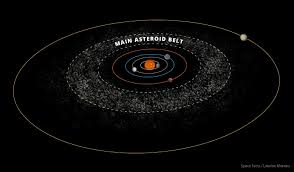
In fact, in some respects the sheer range of Old Solar System imagery - its capacity and power - is at its most impressive among the asteroids.
Stid: Is this just you getting excited at colourful stories? Or -
Zendexor: You mean: am I waffling, or do I have a point to make about the Rules of Power that govern asteroidal tale-telling success? Answer: both.
I waffle pie-eyed at the sheer irresistibility of The Lake of the Gone-Forever, Exiles on Asperus and Master of the Asteroid. Also at more fleeting episodes such as the "hunting asteroid" in Time And Again:
The asteroid was enveloped in the perpetual twilight of the far-from-sun and its frosty peaks speared up like sharp, silvery needles stabbing at the stars.
But then, having waffled, I reflect - busily - and from the examination of my own reactions, and my reasoning from there, I arrive at some conclusions about what works and why, in this particular district of the Old Solar System.
the crowded sky
And now for demonstration number one, an overture that contains a clue. In this extract - from Out of the Silent Planet - a space traveller who has returned from Malacandra (Mars) relates one of the night skies he saw from that world:
I see myself bathing with Hyoi in the warm lake. He laughs at my clumsy swimming; accustomed to a heavier world, I can hardly get enough of me under water to make any headway. And then I see the night sky. The greater part of it is very like ours, though the depths are blacker and the skies brighter; but something that no terrestrial analogy will enable you fully to picture is happening in the west. Imagine the Milky Way magnified - the Milky Way seen through our largest telescope on the clearest night. And then imagine this, not painted across the zenith, but rising like a constellation behind the mountain-tops - a dazzling necklace of lights brilliant as planets, slowly heaving itself up till it fills a fifth of the sky and now leaves a belt of blackness between itself and the horizon...
...the Malacandrians... call the Asteroids the 'dancers before the threshold of the Great Worlds'...
Stid: Lewis has sure got his proportions wrong. He -
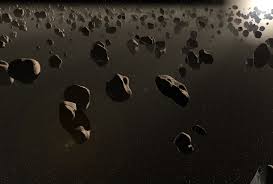
Zendexor: He's allowed to! And this is one of the discoveries we must note in our enquiry: OSS asteroid stories are allowed to magnify the density and brilliance of the Belt.
One really cute consequence of this is a point made in Captain Future's Challenge, in the scene where the robot, Grag, is stranded on a small inhabited planetoid:
Grag got to his feet. His gravitation-equalizer made him the same weight as ever, even on this small world. He found that he had fallen onto a grassy clearing in the towering reeds. Nearby was a huddled village of wicker huts. And closer to him, staring in awe at him, stood a horde of humans.
By the brilliant starlight that is the day of the asteroid belt, Grag perceived that these people were really sub-men. They were small, timid, ignorant savages with brown bodies clad in skin tunics, and unintelligent, childlike faces...
"Asteroidians" was the name given to the strange human-like race who inhabited many of the countless planetoids of the zone, and most of whom were of a primitive type of people. They had apparently spread from one asteroid to another by somehow bridging the gap from world to world when the swarming asteroids came close together...
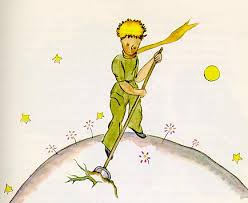
Harlei: What a delicious picture - like hopping from one bus onto another in slow dense traffic.
Zendexor: Shades of Le Petit Prince, indeed! Remember that tale, of the Little Prince from the asteroid belt? A children's fable that haunts the adult reader. (I think I remember that the Prince flies from one asteroid to another with the help of birds.)
Of course the Belt isn't really close-packed like the Captain Future scenario implies. Mind you, it could be like that, elsewhere! Consider the close-packed brightness of the rings of Saturn - perhaps you could have a whole Asteroid Belt as dense as that, surrounding some unknown star. Who knows what's possible out there, in other solar systems?
And of course you can have colourful stories set on the asteroids of any solar system.
But in ours, even in the fictional Old Solar System, you'd expect certain rules to apply. And they do. Only, not quite the way one would expect.
artistic law and order in the belt
Harlei: By "rules" you mean to refer, I suppose, to the limits which writers must observe, to preserve the minimum of credibility? Such as: you can give Mars a breathable atmosphere, but not oceans, nor a different diameter or a large moon. You can give Jupiter a solid surface, but you must admit it has a big gravitational pull. And so on.
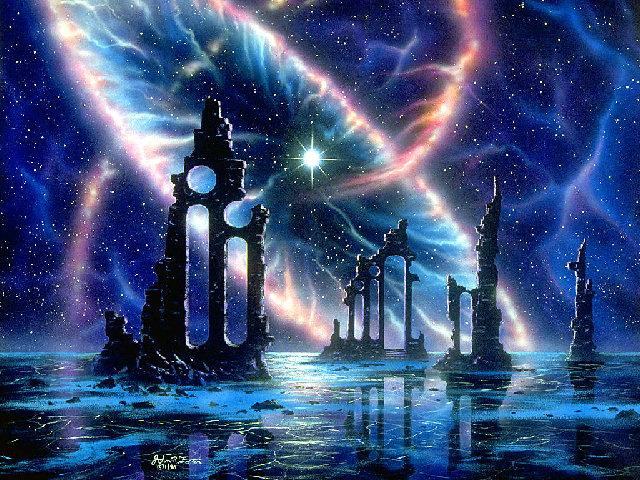 the Lake of the Gone-Forever
the Lake of the Gone-ForeverZendexor: Precisely - but look what happens when we come to the asteroids. Look what's allowed, look how far the boundaries can stretch and yet not break. You'll find that authors are permitted to invent worlds which don't exist at all outside their stories. Worlds hundreds of miles in diameter. Like the newly-discovered 800-mile asteroid in Brigands of the Moon -
The asteroid hung over our bow quarter... A giant ball now, filling all the quadrant of the heavens. The configurations of its mountains - its land and water areas - were plainly visible.
"Perfectly habitable," Blackstone said. "But I've searched all over this hemisphere with the glass. No sign of human life - certainly nothing civilized - nothing in the fashion of cities."
A fair little world, by the look of it... There seemed a normal atmosphere. We could see areas where the surface was obscured by clouds. And oceans, and land masses. Polar ice caps. Lush vegetation at the equator.
Blackstone had roughly cast its orbital elements. A narrow ellipse. No wonder we had never encountered this fair little world before. It had come from the outer region beyond Neptune. At perihelion it would reach inside Mercury, round the Sun, and head outward again.
Stid: I don't suppose we're told how the vegetation copes with the climate at perihelion and aphelion...
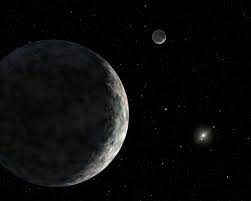
Harlei: Yes we are, fifty pages further on:
A few years ago... this fair landscape was congealed white and bleak with a sweep of glacial ice. But the seeds of life miraculously were here. The miracle of life! Under the warming, germinating sunlight, the verdure sprung.
Stid: "Miracle" is right!
Harlei: Yes, well, the extreme orbit does at least give us the reason why that world hadn't been spotted before.
Stid: A thin excuse, I'd say, considering the body's size.
Zendexor: But it works. I feel my acceptance-cogs turning as I read it. Authors can't get away with this sort of thing anywhere else - you
couldn't, for example, invent an unknown Jovian moon that size - but in
the Asteroid Belt you can do it!
Thus, in one of the best stories, we have Iskar, the planetoid in The Lake of the Gone-Forever, big enough to have a tribe of human inhabitants; and Asperus, which is said in Exiles on Asperus to have a diameter "just under five hundred miles, though the density of the core was many times greater than that of Earth". (In reality, of course, we know all the large asteroids, and none of that size could possibly remain undiscovered in the main Belt.)
Stid: So - you can invent your own asteroids. And you can people them, it seems. With breathable air? Planetary gravity? Vegetation?
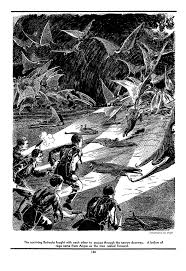 the Batrachs of Asperus
the Batrachs of AsperusZendexor: Breathable air, yes. Asperus has plenty of vegetation; the much colder, icy Iskar has mosses, enough for Krah's tribe's livestock to feed on... As for gravity, well, it's not mentioned in The Lake of the Gone-Forever but in Exiles on Asperus we are told that the gravity is low; the native creatures are consequently attenuated in build - as they are, even more extremely, on Phocea in Master of the Asteroid.
Stid: Seems there's not much you can't do, in an asteroid story.
Zendexor: I have researched the do's and don'ts, and I can set out a list -
Stid: Researched - how? What type of research?
Zendexor: Self-examination, like I said earlier. Reflecting upon the way my mind works or doesn't work. Suspension of disbelief isn't an exact science, but neither is it a complete foggy mess.
Anyhow, here's my list of indulgences, of customary permissions, for writers of OSS asteroid stories. You are given licence to -
- pretend that the theory of the progenitor planet is true (despite the fact that in reality scientists no longer regard the asteroids as remnants of a planet which exploded; on the contrary, they're now considered to be unused rubble left over from planet formation)
- invent large asteroids (as mentioned previously)
- have air and life on asteroids, despite their low gravity
- have the Belt so dense that you can see its bodies twinkling profusely in the sky (as the Malacandrians saw them), although in reality asteroids are so small and far-scattered that you'd be lucky to see any with the naked eye even while you zoomed through the Belt in your spaceship
Stid: Those are the do's, then - and quite indulgent they are! What about the don'ts - if any?

Zendexor: Physically, you're not allowed to misplace the Belt and situate it - for example - between Venus and Earth! Or to people it with worlds thousands of miles in diameter - they must remain mere hundreds of miles wide at most. And with regard to feelings, you're not allowed to go against the emotional truth of a small world: that's to say, the smallness, the remoteness, the isolation must affect the scene somehow, all the more so if, in other respects, scientific truth is flouted - as in The Lake of the Gone-Forever:
Esmond said something, but Conway neither heard it nor cared what it was. He pushed past him and went with long strides down the passage and up the ladder to the observation bridge.
It was dark up there under the huge port. Immediately everything came clear to his vision - the blue-black sky of the Asteroid Belt, full of flashing golden stars where the little worlds caught the light of the distant Sun.
And ahead, dead ahead, he saw the tiny misty globe that was Iskar.
He stood for a long time, staring at it, and he neither moved nor spoke except that a deep trembling ran through him.
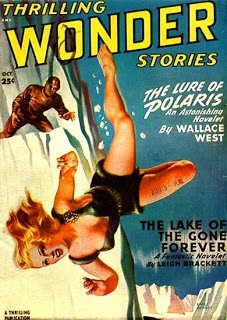
Greed has drawn Conway to Iskar, a recurrent dream of mystery and vast wealth, but the secret of the Lake - a unique natural phenomenon - will work its own way with him, will defeat his plans and personally end his dreams, as it did (in a different sense) those of his father. It's a clash of wills between man and world, and they're not ill-matched. One little world with its own secret memory-Lake and its one tribe of native people, and little else - that compression of scene is what makes the reader not only know but feel that this is a planetoid. The shape of the story would be different if it were a planet. Thus the author is staying true, not to physical science but to some equally valid artistic law.
The spaceship lay like a vast black whale, stranded on a spotless floe. Behind it the ice-wall rose, its upper spires carved by the wind into delicate fantastic shapes. Spreading away from it to the short curve of the horizon was a sloping plain of snow, broken here and there by gleaming tors. In the distance other ranges lifted sharply against the deep dark blue of the sky.
Rand Conway stood apart from the others. His face had a strange look. He slipped the warm hood back, lifting his head in the icy wind.
Great golden stars wheeled overhead and the air was full of dancing motes of frost. The wind played with the powdery snow, whirling it up into shining veils, smoothing it again into curious patterns of ripples.
The plain, the sky, the frozen spires, had a wondrous beauty of colour, infinitely soft and subtle. There was no glare here to plague Conway's eyes. Iskar glimmered in a sort of misty twilight, like the twilight of a dream.
Iskar - the bulk of it solid under his feet at last after all these years. Conway trembled and found it difficult to breathe. His eyes, black and luminous as a cat's now with the expansion of the pupils, glistened with a hard light. Iskar!
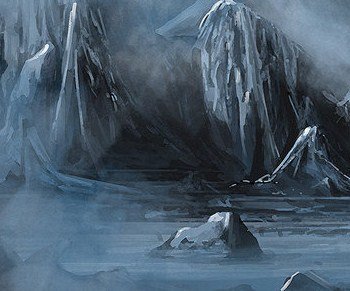
Quite suddenly he was afraid.
Fear rushed at him out of the narrow valleys, down from the singing peaks. It came in the wind and rose up from the snow under his feet. It wrapped him in a freezing shroud and for a moment reality slipped away from him and he was lost.
The shadows were deep under the icy cliffs and the mouths of the valleys were black and full of whispers. It seemed to him that the lurking terror of his dream was very close, close and waiting.
Harlei: Intensity, I see.
Zendexor: Even the comments about Conway's eyesight (he is sensitive to bright light) are a clue to the mystery. This, and other clues, slam together nicely at the climax. The story is a piece of literary perfection, a rounded little asteroid in itself. Brian Aldiss commented that the key concept has a profounder meaning than perhaps the author intended at the time; but to that one may reply, of course - what's new? Authors are diggers of wells; some delve deeper than others, but none have control over what may gush forth.
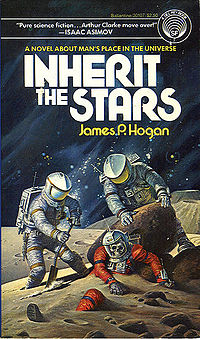
Stid: And these gushers are too valuable to ignore, even if what they're gushing is not the truth? Like the legend of the blown-up progenitor planet.
Zendexor: Well, that's fiction for you. A pack of lies, if you like. But you could call them legends instead. That sounds much nicer, and more useful - because legends are about us, ultimately. About the things that matter to us and, therefore, about our values.
Take this progenitor-planet theme. It's used in Inherit the Stars, despite the fact that the author is usually considered a writer of "hard" science fiction, devoted to accuracy, to not going beyond what might be true. But who can resist the force - the imagery and, in this case, the moral force - of the idea that the world Minerva blew up through the fault of its inhabitants? A lost "Atlantis of the skies", you could call it.
Harlei: I see the relevance of the progenitor-planet to this page, but could we get back to talking about the asteroids themselves? I want to talk about the best tale of all, or at least the one that's equal best alongside The Lake of the Gone-Forever and Exiles on Asperus. It's not as long as they are - a short story rather than a novella - but you, Zendexor, will support me when I say it gives to the reader quite as much food for the imagination as the longer ones do. Besides, it is that bit more authentic insofar as its asteroid-dwellers are unquestionably native. There's no hint of COMOLD as there is with the beings on Asperus who, unfortunately, have
"legends... of the Mother of all Batrachs, so great, so magnificent in her wings, that she could fly not merely as we fly, but out to the furthest stars in the sky. Now and again, however, even she tired and needed to rest, and on each world where she rested, she brought forth ten small Batrachs such as we. You can make what you like out of that. It may be that the Mother was in reality, a space ship such as yours..."
- in other words (groan, groan, Zendexor!) in Asperus we yet again find a delightful world which turns out to be a mere colony.
But our next case is different!
the most asteroidish asteroid
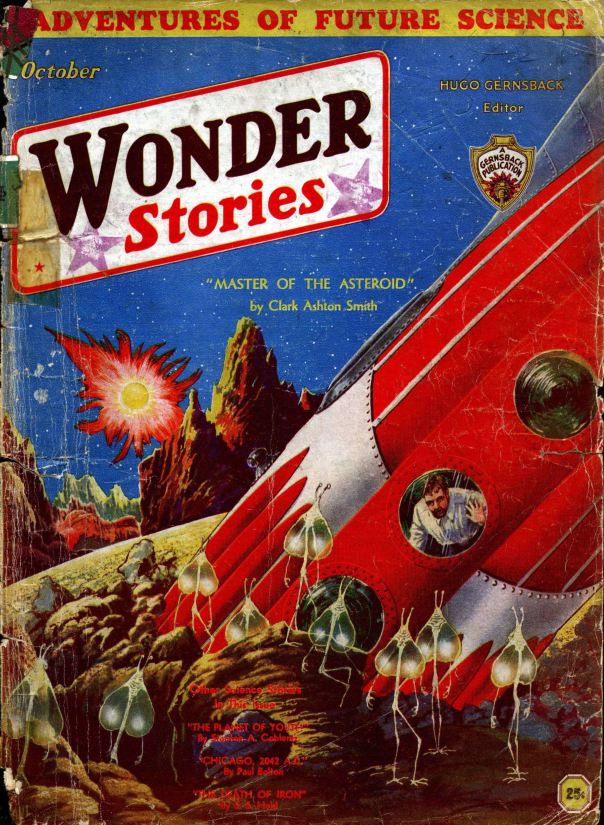
Now the tale I'm about to discuss - Master of the Asteroid - is about a smaller world than either Iskar or Asperus. It is "tiny, remote Phocea" and it is the ultimate in haunting, magnificent loneliness. It is not dead - far from it. But you can almost hear the silence.
Stid: How do we know it's smaller?
Harlei: If you've listened to Zendexor, you can answer that one. Go on, Z.
Zendexor: By inspection of our emotions as we read the tale - that's how we know it's a smaller world than those other two. The crash-landed pilot of the space-ship Selenite writes in his journal:
...It seemed to me that I was light and incorporeal as a cloud - that I was no more than the airy specter of my former self.
The floor and walls were strangely hot; and it came to me that the heating must have been caused by the passage of the Selenite through some sort of atmosphere. The asteroid, then, was not wholly airless, as such bodies are commonly supposed to be; and probably it was one of the larger fragments with a diameter of many miles - perhaps hundreds....
Stid: There you are - it could be as large as Iskar.
Zendexor: Depending on how we pursue it, this can become quite a significant question. If I'm right, if my approach has been right all along, analysis of these asteroid stories should tell us much about how OSS science fiction achieves its effects. Let me continue the quotation:
...But even this realization failed to prepare me for the weird and surprising scene upon which I gazed through the port.
The horizon of serrate peaks, like a miniature mountain-range, lay at a distance of several hundred yards. Above it, the small, intensely brilliant sun, like a fiery moon in its magnitude, was sinking with visible rapidity in the dark sky that revealed the major stars and planets.
The Selenite had plunged into a shallow valley, and had half-buried its prow and bottom in a soil that was formed by decomposing rock, mainly basaltic. All about were fretted ridges, guttering pillars and pinnacles; and over these, amazingly, there clambered frail, pipy, leafless vines with broad, yellow-green tendrils flat and thin as paper. Insubstantial-looking lichens, taller than a man, and having the form of flat antlers, grew in single rows and thickets along the valley.
Between the thickets, I saw the approach of certain living creatures...
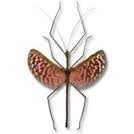
All he can do is watch. Observe. Write his journal. For this narrator, Edmond Beverly, hasn't a hope. Indeed we've been told that his skeleton is going to be found thirty years later, slumped against the control cabin viewport. So he's going to die, eventually, without ever being able to emerge from his crashed ship.
The Selenite is "the first known rocket ship to dare the zone of the asteroids" but the trip wasn't planned; it was a mad spur-of-the-moment flight by three mentally unhinged Mars colonists who steal the rocket and blast off in the direction of Jupiter because they had "conceived the idea that Mars, with its fifteen Earthmen, was entirely too crowded". Madness is one of the dangers of alien environments - that is one message of the story.
Its mood is summarised in paragraph one. I'm going to quote that paragraph in full because it's a terrific example of the kind of writing which, sadly, won't be found again. An editor, nowadays, would reject it as antiquated in tone, and so it is, but only because now we take the vastness of space for granted - and in doing so we're making a big mistake, as we'd soon find out if we underwent Edmond Beverly's experience! Here then (slightly marred by the verb-tense inconsistency in its second sentence) is the magnificent exordium of Master of the Asteroid:
Man's conquest of the interplanetary gulfs has been fraught with many tragedies. Vessel after vessel, like venturesome motes, disappeared in the infinite - and had not returned. Inevitably, for the most part, the lost explorers have left no record of their fate. Their ships have flared as unknown meteors through the atmosphere of the further planets, to fall like shapeless metal cinders on a never-visited terrain; or have become the dead, frozen satellites of other worlds or moons. A few, perhaps, among the unreturning fliers, have succeeded in landing somewhere, and their crews have perished immediately, or survived for a little while amid the inconceivably hostile environment of a cosmos not designed for men.
The fate of the Selenite is a rare example of a space-disaster whose story can be reconstructed from the log of an identified wreck.
We are shown the entries, written by the last survivor "almost to the very moment of his death from a doubtful, unexplained cause".
Stid: I suppose that will happen for real one day. It would be good to read a realistic tale about a castaway on an asteroid, without this one's absurd errors...
Zendexor: Oh for goodness' sake, you don't read this stuff for the science. Or the logic. Beverly's ship has "artificial gravity regulators" - i.e. man has learned to control gravity - so if that's the case, why is he in a rocket? No need for rockets once you've solved the secret of gravity, surely! And then there's the really absurd density of the Asteroid Belt:
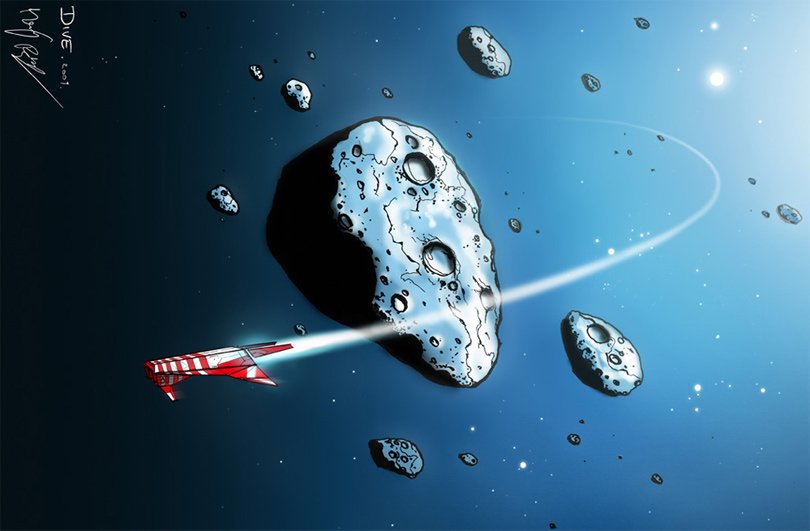
Sept. 19th. I have passed several more of the asteroids - irregular fragments, little larger than meteoric stones; and all my skill of spacemanship has been taxed severely to avert collision...
As bad as the celestial rubble in The Empire Strikes Back. If the Belt were that dense, we'd see it from here, as a Saturn-bright Ring. The science in the story is laughable. And yet... this brings me back to the issue of the size of Phocea -
Because emotions exist, emotional truth counts as science.
A writer who can describe an asteroid as a "broken-off mountain" -
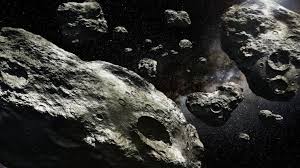
Sept. 18th. I am entering the zone of the asteroids - those desert rocks, fragmentary and amorphous, that whirl in far-scattered array between Mars and Jupiter. Today the Selenite passed very close to one of them - a small body like a broken-off mountain, which heaved suddenly from the gulf with knife-sharp pinnacles and black gullies that seemed to cleave to its very heart...
- such an author, I'd say, has mastered the science of getting to the point, the point being, in this story, that the cosmos is a darned unfriendly place.
And having made this comment, I have to say, "and yet" -
An amazing feeling almost of serenity, of consolation - no, not quite these things, but some quality that soothes the spirit - alleviates the darkness and the loneliness of the trapped Edmond Beverly.
It is due to the presence of the strange stick-insect beings, the Phasmidae that inhabit Phocea:
I think that they saw me with those weird, inexpressive eyes; for they drew near, pressing against the very port, till I could have touched them with my hand if the port had been open. Perhaps they too were surprised: for the thin eye-stalks seemed to lengthen as they stared and there was a queer waving of their sharded arms, a quivering of their horny mouths, as if they were holding converse with each other...
Without quoting the entire story I can hardly convey the dreamlike isolation expressed by the narrator as he waits for his air and food to run out. During each of the planetoid's short hour-long days, the stick-insect beings crowd round his ship, they seemed to venerate it and bring it offerings of fruit, they stare, they make semaphoric gestures with their attenuated limbs...
Oddly enough, the fruits and vegetables always disappear during the night. They are eaten by large, luminous flying creatures with filmy wings, that seem to be wholly nocturnal in their habits. Doubtless, however, the walking-sticks believe that I, the strange ultra-stellar god, have accepted the sacrifice.
It is all strange, unreal, immaterial. The loss of normal gravity makes me feel like a phantom; and I seem to live in a phantom world. My thoughts, my emotion, my despair - all are no more than mists that waver on the verge of oblivion... And yet, by some fantastic irony, I am worshipped as a god!...

The end comes, gradually at first. The asteroid's seasons advance towards winter. The plants wither, the insectoid creatures die off. Utter cold and desolation comes to Phocea.
The heating apparatus of the Selenite is still in good working order; so the cold cannot reach me. But the black frost of space has fallen upon my spirit. Strange - I did not feel so utterly bereft and alone while the insect people came daily. Now that they come no more, I seem to have been overtaken by the ultimate horror of solitude, by the chill terror of an alienation beyond life. I can write no more, for my brain and heart fail me.
And yet he does write more - just a little more. For spring returns to the asteroid, and
...The snow has melted from the rocks, forming little rills and pools of water; and strange plant-buds are protruding from the sandy soil. They lift and swell visibly as I watch them. I am beyond hope, beyond life, in a weird vacuum; but I see these beings as a condemned captive sees the stirring of spring from his cell. They rouse in me an emotion whose very name I had forgotten.
A new generation of the stick-beings grows up. Beverly watches them light-headedly, sensing that his supply of air is running out at last. But then finally he sees something else - something new. He sees the sinister master of the asteroid. It is the last thing he sees.
Leigh Brackett, "The Lake of the Gone-Forever" (Thrilling Wonder Stories, October 1949); Ray Cummings, Brigands of the Moon (1931); Edmond Hamilton, Captain Future's Challenge (1940, 1967); James P Hogan, Inherit the Stars (1977); C S Lewis, Out of the Silent Planet(1938); Antoine de Saint-Exupéry, Le Petit Prince (1944); Clifford D Simak, Time and Again (1951); Clark Ashton Smith, "Master of the Asteroid" (Wonder Stories, October 1932); John Wyndham, "Exiles on Asperus" (Wonder Stories Quarterly, Winter 1933, under Wyndham's actual name, John Beynon Harris)
For a tale set on the second-largest asteroid, see Peril on Pallas.
See also the Ceres page for material on the largest asteroid.
For comment on the literary magic of the asteroids, see the OSS Diary for 21st December 2016.
For a comparison between the isolation of the castwaway in Clark Ashton Smith's Master of the Asteroid and that of the hermit in Robert Sheckley's Alone At Last, see the OSS Diary for 23rd December 2016.
See the OSS Diary, 25th February 2017, for artificial asteroids in Alfred Bester's two classic novels.
For the value of the Belt in story-making, see the Diary, The Rocky Main, where I suggest some ideas for a civilization of native "asteroidians".
See the Diary, Poetic Licence in the Asteroid Belt: the case of localized gravity for the Captain Future adventure by Brett Sterling (alias Edmond Hamilton), The Tenth Planet.
See Not Sure Where to Put it? Try an Asteroid for Robert Bloch's The Fear Planet. Also, on the same theme, see The Close Frontier.
See To the Belt with Alan E Nourse for Scavengers in Space.
See Chill on beautiful Iskar! for the attractions of Brackett's The Lake of the Gone Forever.
See Classic Hamilton Free Online for The World With a Thousand Moons, set on Vesta.
See Digging for plots among the asteroids for the origin of their separate cultures.
For the preposterous asteroid Zuun see The excuse-dial turned to maximum.






